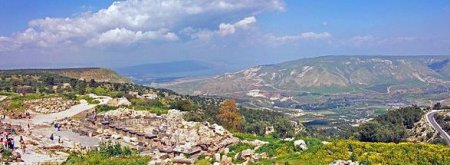Geography and the Reliability of the Gospels
Simon Gathercole shows how the geographical information in the New Testament Gospels demonstrates their historical reliability and their basis in eyewitness sources. The illustrated lecture lasts about 60 minutes and is followed by about 20 minutes of Q&A.
The accompanying PDF file contains the slides used during the lecture.
The Journeys of Jesus and Jewish Geography
The Gospels in the New Testament contain a remarkable amount of geographical information, especially in the quantity of references to areas, towns and villages that Jesus (and John the Baptist) visited. Are these genuine or fictitious? Some Jesus sceptics have doubted the existence of places like Nazareth and Capernaum. Even many New Testament scholars are unaware of the evidence for Gospel sites.
Strikingly, however, a huge proportion of the place-names in the Gospels are paralleled in Jewish literature outside the New Testament, even down to some of the small villages. This lecture examines the historical evidence for the places in the Gospel, some already known, some presented for the first time. It shows how this evidence has clear implications for the reliability of the Gospel narratives.
In the lecture, Simon examines where the 27 towns mentioned in the Gospels are mentioned in three different literary types: the Old Testament; the works of the first century historian Josephus; and rabbinic literature. He does not consider archaeological finds in this talk.
Of the 27 towns mentioned, 22 are also found to be mentioned in these other documents.The towns are: *Aenon, Arimathaea, *Bethany, Bethlehem, Bethphage, Bethsaida, Caesarea Philippi, Cana, Capernaum, Chorazin, *Dalmanutha, Emmaus, Ephraim, Gadara, Gergesa, Gennesaret, Jericho, Jerusalem, *Magadan, Magdala, Nain, Nazareth, *Salim, Sidon, Sychar, Tiberias and Tyre. Those preceded by an asterisk are the five which were not mentioned elsewhere.
Simon then shows that these findings for the four New Testament Gospels are comparable to a similar examination of towns mentioned in the works of Josephus. These both contrast starkly, however, with the limited, and often erroneous, geographical descriptions in the apocryphal gospels.
Two brief quotations from Simon summarise his conclusions:
… it's hard to fake accurate geography. If you try to, you get it wrong.
So the New Testament Gospel writers couldn't possibly have got right the details that they get right … unless they had eyewitness knowledge or knowledge from eyewitness sources.
© 2016 Simon Gathercole
With many thanks to Dr Gathercole for making the slides of his lecture available for bethinking.org.



